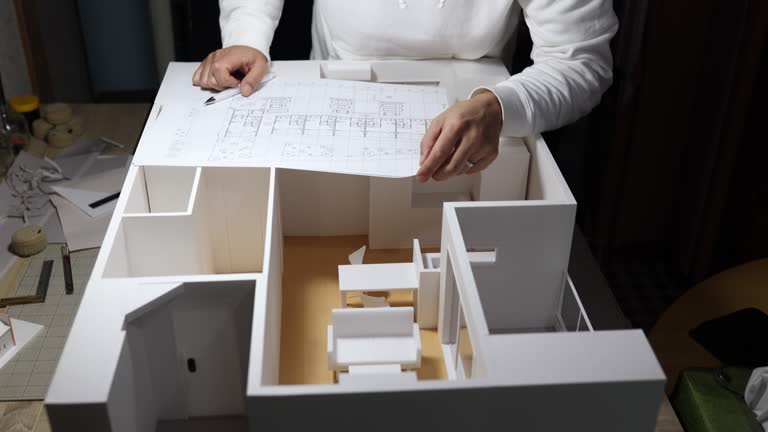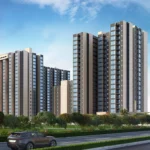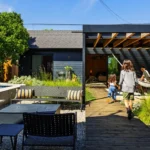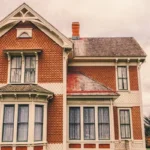Los Angeles is famous for its entertainment and diverse culture, but it’s also a hub of architectural innovation. The city’s iconic skyline and rich history attract creative architects who are returning to reshape its urban scene. This focus on urban design and architectural variety is key for the city’s growth and global appeal.
By looking at the new design ideas from Los Angeles architecture firms, we can see their emphasis on sustainable development and community-focused projects. The different architectural styles they’re introducing reflect the multicultural makeup of Los Angeles. This revitalization brings economic benefits, like job creation and increased tourism. What’s more, combining historical charm with modern functionality helps preserve the city’s heritage. This guide will examine these themes and discuss the future opportunities and challenges that Los Angeles faces in its architectural development.

A Renewed Vision of Urban Design
Architectural firms are changing the way cities are designed by focusing on sustainable development, green spaces, and projects that benefit the community. This new approach moves away from traditional methods to more innovative and environmentally friendly practices. Firms are adding features like green roofs, energy-efficient buildings, and areas for pedestrians, all aimed at creating healthier and more enjoyable cities.
By prioritizing community-focused projects, they promote social interaction and a sense of belonging, improving residents’ quality of life. These efforts are reshaping the city’s architectural identity, combining modern functionality with a focus on the environment and community well-being. This change shows how thoughtful design can tackle today’s urban challenges and create a more sustainable future.
Architectural Diversity and Innovation
Architectural firms returning to Los Angeles are bringing a wide range of styles and modern designs that reflect the city’s diverse culture and forward-thinking attitude. These firms are not just updating traditional looks; they are also exploring new ideas that break from the usual norms. The variety of architectural styles—from sleek, modern skyscrapers to community spaces inspired by different cultures—represents the vibrant identity of Los Angeles.
This mix of tradition and modernity shows how architecture can reflect the spirit of a city. Firms are pushing limits by using sustainable materials, reusing existing structures, and incorporating technology into their designs. The result is a rich collection of buildings that appeal to different tastes and needs, enhancing the city’s architectural scene and promoting a progressive urban identity.
Economic and Social Impact
The architectural boom in Los Angeles has brought about significant economic benefits and social changes, transforming the city in important ways. One key effect is the creation of many jobs in construction, design, and related fields, which boosts local employment and encourages economic growth. Additionally, the arrival of eye-catching new buildings and creative designs has made the city more attractive to tourists, increasing revenue for local businesses and enhancing Los Angeles’ global reputation.
These architectural projects often include community spaces like parks and plazas, which improve social welfare by giving residents places for recreation and interaction. Such developments can build a sense of community, enhance quality of life, and create a healthier urban environment.

Revitalizing Historical Landmarks
Architects in Los Angeles are committed to preserving and revitalizing the city’s historical landmarks, blending their old-world charm with modern functionality. This work is essential for keeping the city’s rich heritage alive while making these landmarks useful today. They focus on restoring original architectural features, improving infrastructure, and adding modern amenities in a way that respects the historical character.
Opinions on these efforts differ; some view them as a way to honor the past and connect it to the future, while others highlight the importance of making these buildings practical in today’s urban setting. Consequently, historical landmarks in Los Angeles are not just remnants of the past but vibrant parts of the city, fitting into its changing architectural scene.
Future Prospects and Challenges
Looking ahead, Los Angeles has both exciting opportunities and challenges in its architectural development. Environmental issues, especially the need for sustainable building practices, will greatly affect future projects. The city’s zoning laws can either support or limit innovative designs. Economic changes also pose ongoing challenges, potentially impacting funding and the feasibility of ambitious projects.
On the positive side, improvements in green technology and a growing focus on eco-friendly practices offer hope for a more sustainable urban future. However, balancing these advancements with regulations and economic realities requires careful planning. Architects, city planners, and stakeholders need to work together to tackle these challenges, ensuring that Los Angeles continues to thrive architecturally and remains strong in the face of ongoing obstacles.
The architecture of Los Angeles is undergoing a major transformation, fueled by innovation, sustainability, and respect for its diverse cultural heritage. As architects adopt modern design practices, they are improving the city’s look while also enhancing the quality of life for residents through community-focused projects. Restoring historical landmarks connects the past with the present, adding to the city’s unique identity. Although challenges exist, the combined efforts of architects, planners, and the community have the potential to create a vibrant, sustainable future for Los Angeles, ensuring its continued architectural growth.






